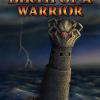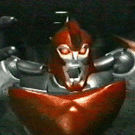-
Posts
6,611 -
Joined
-
Last visited
-
Days Won
33
Other groups
Year 20


About bonesiii

Profile Information
-
Gender
Male
-
Location
Sorry, that information is classified.
-
Interests
Sorry, that information is classified.
Contact Methods
-
Website URL
http://www.freewebs.com/bonesiii_topics
-
LEGO.com Account
bonesiii
Recent Profile Visitors
44,374 profile views
bonesiii's Achievements
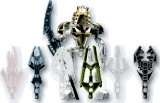
Fragmentation Mended (176/293)
-
ToaSerwithed started following bonesiii
-
I'm not going to be on BZP anymore for long, so this is goodbye.

-
I'm terribly sorry for what happened. I only just heard about it.

-
Addition I missed in the previous post -- sorry, I skipped right over the part about You just lost the game's post... Yeah, I didn't catch the later part of his post at the time. Looking at the timestamps, I can't be sure what was actually there, as my next post after his comes before his edit. I do recall the line about me saying conflicts ended in 1v1, and I don't recall saying that, so I don't know what happened there. I wondered if he confused me for somebody else or he was trying to rephrase something from a while ago that I had forgotten. Maybe it was all there, but I was only skimming some posts at the time, as I said, so yeah. I think I did skim that part. I get where you're coming from there. That said, your "let's say I don't know anything about Bionicle" point doesn't really work there, because, again, he's talking to longtime fans, for the most part, who do know a lot about it. Anyway, I wasn't trying to endorse everything in his post, just that a theme can be condensed, in a sense, down to one word or simple concept, if you're speaking to somebody who does know that context behind the word (what the word means), like everybody would generally know about rabbits. And at this point we may be overthinking that one post. But FTR. Also, I should remind you to be careful to stick to our rules of civility. Insulting somebody as you did, whether staff or otherwise, as you know by now I would hope, is flaming and is against the rules. I hesitate to bring it up as it does sound like you're trying to be constructive, but after thinking it over, I do think the reminder needs to be said. If you are unsure where that line is, please PM me.
-
Zox, first, to your question, I was talking about the second dictionary definition saying a "unifying idea" without any comment on quality, and fishers (rightly) identified serious quality problems in G2, and seemed to mix that into the definition. I thought I made that clear, but if not, I apologize. To your rest, I hope people will pardon a bit of a speech off-topic, but this needs said, I think, if only because maybe it'll help somebody else out there who may have similar struggles as me. Yeah, believe it or not, but I see that appearance. I said so in the post you were quoting, though not in detail as it's my job to refocus discussion back on topic. But if that wasn't enough, maybe it's time for some more detail. So here we go. It's an age old riddle -- if you actually learn the methods to avoid being wrong, unfortunately then you have less opportunities to be seen admitting to being wrong. It can create an illusion of false pride, of a lack of humility -- even a real temptation to give into those things. You have to know that going in and choose to be okay with it. It comes with a price. It's worth it, but not a cakewalk. And besides that, it also teaches honest awareness of your own flaws. If you'll pardon the bold there. It makes awareness of my own flaws even stronger. Why? Because I have to be rejecting bad ideas I come up with all the time! I often find myself feeling really, really silly. Maybe I could stand to talk about that experience more often, huh? But it happens a lot. The nice thing is, it gives a good reward. You find that you can come up with ideas (after rejecting many others) that others tell you are very good, more often. Some often tell me they're amazed I can do that over and over. But I know it's not me -- it was just sheer dumb luck that I got to know some of the "tricks of the trade" of truthseeking. I'm as flawed as anybody. But think about it -- that also means these methods can be learned by anybody. So, it gives me inspiration to keep going, despite the occasional people who will misunderstand and take it completely the wrong way. I know I can bring some benefit to people, perhaps not very well, but it's better than not trying. And perhaps I can continue to learn from my mistakes and get better at it, you know? I still think I haven't yet found the secret to the riddle -- but I see that some others do seem to have found it, like my grandma. I aspire to someday be able to both avoid being wrong and avoid people thinking that I wouldn't admit to it if it happened. I haven't found it, yet, though, unfortunately. As you're showing. I might not have the solution yet, but I did learn something that seems to usually help in this situation. Being freely self-critical teaches not just to be aware of my own serious weaknesses, but to recognize that they are balanced by some strengths, and I seem to get by somehow on those -- and more importantly, I can understand that the same is true of you; of everyone. We all have unique strengths and weaknesses. It's part of being human. That was one of the hardest lessons I had to learn -- to appreciate others' strengths and weaknesses being different from mine. I think I see weaknesses on your part, now being directed against me. But even though you would do that, I can still see past them and see unique strengths that are very good. You may worry that I wouldn't, because the normal human reaction to criticism is to just reject and be defensive. But I do. I see that you are speaking from a situation where you have a strength you wish others had, and you hope (I hope ) to be able to teach it to others. That's good. I hope I can learn it. That said, I also think we all need to learn how to be comfortable with our strengths and weaknesses -- our personalities -- being different from others, and be comfortable with others' being different. I want to learn from others' strengths, so I can hopefully minimize the harm of my own weaknesses, but I also want to accept my own personality and not try to be somebody else, and accept others for who they are too. So that's my approach to things -- take it as a given that others will be different, but also know that maybe I could still help them improve in some ways. Anywho, hope it helps. Now, please, let's get back on topic.
-
Well, I always expected they would explore the ocean and find other islands, but still keep living mainly on Mata Nui (this of course was before we learned the truth of what the island is). So, in a sense they would "stay" (or keep that as home base). Maybe it could have still been interesting for a time. Maybe it's what Gen 2 will do.
-
bonesiii started following Questions About Digital Building , What Would Bionicle Have Been Like if We Had Never Left Mata-Nui? , Stone and earth? :/ and 1 other
-
Well, since he didn't say "rabbits attacking soldiers" I'd guess probably the qualities of normal rabbits, how they make people feel, etc. Also, keep in mind, as I mentioned, meaning that a viewer/reader takes away is not necessarily limited to what the artist/author had in mind. Message is a more natural word for that. It could be if an artist or author said "nobody's allowed to have their own interpretations of what I make", but very few do that; most are aware of the way others will perceive their work in varying ways and want that. And even if we jargonistically limit "meaning" to "what the author meant", we still have to admit that the other definition of meaning as "what it meant to me" exists. The latter is usually how it's used in stories in my experience. Nothing in the definitions you provided says anything about only a certain level of quality (objective or perceived) counting as a theme. It's a unifying idea. There's no high or low standard there -- if there is a unifying idea, and there certainly is in both generations of Bionicle, it is a theme. Again, you can use a jargon term "theme" with way, and that's fine. But you should recognize it is not the primary meaning of the word. No problem. [Addition after reading on... well, maybe there is, but see my PM.] I know you do; I was just confused as to how you could quote that (second) definition and then go on to say G2 didn't have a theme, evidently by that definition. Regardless, thanks for acknowledging that. Again I... well,l pardon the pun ( ), but -- seem to be seeing a theme here; apparently people are taking him way more literally than it seemed to me he intended to be taken. I took him as meaning that the obvious major traits of Bionicle are the theme, the lessons taught in the story we all have (so we don't really need him to spell that out for us, presumably). We'd need him to clarify to be sure, but I thought his... ahem... meaning was self-evident. I don't see what else he could have meant, really. How did you take it? 'Tis fine. *reads ahead a bit* However... see my PM... >_> What I'll say here is... perhaps you might want to try starting by asking for clarifications before leaping to assumptions. Posts are best kept short-ish -- yeah, even mine -- and I may allude to concepts I hope are common knowledge due to having been discussed to death in the past or being commonly taught like what I said about "vehicle"/"cargo" to save time. If people who don't know them are confused, then we can clear it up in later posts. It seems like (but I'm still not sure) that may have been going on here. But apparently a lot more needs said and it seems like a PM would be best for this. There's more to it than that. Being willing to admit when we're wrong is great, but it's better to think through ideas that come to us and avoid being wrong in the first place, as well as add cautions when you don't actually have sound support for something. That's a double-edged sword, though, because it means you won't often be wrong, so people don't get to see you admitting it, because you're actually getting rid of the being wrong before you even speak, rejecting ideas. Also means others may not have thought of what you do so might assume it's wrong because they missed steps that, again, will need cleared up in further discussion (that part's fine as long as people remain civil and want to find the truth too, since this is a discussion forum, though -- but occasionally I run into people who struggle with that, and I get it). I did have to admit I was wrong a lot in my early days here, though. Life tends to grant experience. Could... you be more specific? Agreed. Is this directed at You's "the meaning is Bionicle"? If so, again, I presumed he felt none of us needed him to tell us what's been in Bionicle, so we have that context. Same with rabbits... The problem was the argument wasn't just using the same definitions in different words; it was seemingly ignoring the definition that was right there, of a unifying idea, or adding something to it without making it clear that it was being added intentionally. Anyway, it's still probably 200 times deeper into story theory than the topics S&T usually gets, so appreciated regardless. I think he was just trying to be witty and a bit subtle, and I (thought I) got it, and maybe others didn't. Then again, if how I took it isn't as obvious as I thought, maybe I misread and he was just being silly for fun. I don't know. (To be fair, if I had thought of those figures of speech I would have tried to give a hint that that's what they were a few lines down or something.)
-
Keep in mind "work of art" was brought up in the example definition you included in the first post. It is indeed different, but the important parts under consideration are shared between the two. An image provides meaning as well, conveyed through the qualities of the subject matter. And that is where it looks like you get off track in what follows, primarily: I figured this was what was going on here, which was why I mentioned above what I did about the qualities of rabbit being contained in "rabbit". The "rabbit" is the "vehicle", but the meaning is the cargo. There's two basic types of cargo in this sense. First is commonly known cargo, as well as individualized cargo that isn't controlled by the artist/storyteller. This is what you have to go for either in openings of stories or in paintings or things of that sort -- where you cannot depend on your audience having a history of knowledge of what you've developed. A hat rack is not just a hat rack. It is a method of painting meaning into a story that tells you setting, everything that people feel about that setting, memories they can relate to about that setting, and especially characterization. There's a hat rack -- so somebody wears hats. That tells you a lot about their life. Or, they're home, but the hat rack is empty, so maybe they inherited the house. Second is meanings that are built from how your stories, or perhaps a series of paintings for example, go. These are new meanings you control. The hat rack might have special meaning in a story because a little girl's grandfather wore a hat, and he died tragically, so every time she sees a hat rack now, she goes back to that life and loss. You can have both in initial work, of course (developed meanings can become things people notice when they re-read later, or look back at the first painting they saw in a series and notice themes built on in other paintings), but generalized meanings are usually put at beginnings. Meaning and theme are not really optional, when you factor all this. No matter what, there is a theme and there is meaning. Message is different, because fans can take away their own meaning but message is what LEGO intentionally wants to convey, and may fail, or may lack much. But I don't really see grounds for a lack of a message here -- I see a short, poorly developed story, so the message hasn't been made very deep. But it's there -- don't be jealous, stand up for what's right no matter the odds, be willing to sacrifice if necessary when the stakes are high. A lot of what I was taught about good fiction, which generally (though not always) relies on showing, not telling, focused on this. This is vital for storytellers to realize. And if you study classics, you'll find that they do a good job of using this very fact; every object that is there without comment is there intentionally and it conveys meaning. Meaning/cargo and object/vehicle are not the same, but the cargo can be and usually is conveyed through the vehicle alone. Understanding that they are separate does not require that we miss that the object alone can be a powerful way to convey meaning. And to avoid overuse of telling, being consciously aware of this merging of meaning with object is vital. Now again, I'm not saying in any of this that the "theme" or meaning or even message is done all that well in G2. It has serious flaws, as we all know, I think. But let's judge it with clear vision. If nothing else, that may help make more productive criticisms that LEGO could listen to moving forward. I think what's basically driving this is dissatisfaction, which I definitely get. Then again, it's hard to be sure, since we can't help but judge it in light of nostalgia. I've also learned over the years to learn to more easily adapt to give very different things a fair shot, and when I let myself do that, I have enjoyed what little there has been for G2 so far. We'll see how things go from here... or perhaps flop from here lol. Only time will really tell. Now, you can validly use "theme" or meaning and so forth as jargon -- with a different definition, intentionally, and that's fine. I don't think it was really as clear as you hoped in your prior posts what you meant by it, especially by prominently leading with the dictionary cite which did not fit with it -- remember something may always seem clear in your mind, but we don't have the benefit of being telepathic. In any event, thanks for clarifying, and hope this helps. (And by the way, the subject is definitely good to have a topic on!)
-
I've been thinking of putting an entry on it in the pinned Misconceptions topic, like the one (if memory serves) that I included for Plasma/Fire. The thing is, I don't know that this is usually a misconception per se, so much as a common question. Perhaps that topic should simply be expanded to be a FAQ, rather than misconceptions-specific. Unsure. (This would probably be better discussed in the discussion topic that goes along with the misconceptions topic, though.) But what about the difference in toa powers? I guess it could just be personal preference, e.g. Onua prefers causing tremors while Pohatu prefers making fists of rock erupt from the ground. Maybe they don't know there isn't actually a difference, so they continue using their powers the only way they know how to. I'm still going by the rule of stone = hard, discrete, rigid, and earth = softer, continuous, malleable. Well, for whatever it's worth, one of the Greg quotes from the other topic makes it clear they can't control each other's element at all, so while it may be the exact same substance (like technically Water/Ice), it definitely isn't a matter of their just not knowing they could both control it. I'm not sure about the crystal part, but the sand thing would have made sense. Greg mentioned in another of the quotes that technically this would have been the case, but they decided not to risk confusing fans at the time. In G2 evidently they decided kids could handle it... and frankly I think that's right (but in G1 maybe they had in mind maybe having another Toa, which may have turned into the Bara Magna element later, or something). Anywho, G2 can have different rules.
-
I wasn't taking him that literally. The "theme is rabbits" part I took as shorthand for the theme is the qualities of rabbits, probably usually the endearing ones (possibly the deadly ones in some cases lol), that the painting will bring to mind. (And that's also just a matter of definition.) It's a little early to be expecting Matoro's death in G2... but that very scene I mentioned actually could have easily become that. They were willing to fight despite having the clear disadvantage of being so weak, risking him getting angry enough to actually kill at least one. That he didn't is on him (and... yeah, the storytellers, but again, are you really expecting that in the first year?). For their part, they were sacrificing in terms of risking that. And not sure what your point is by being able to also list good examples in G1. Why can't two different stories each have their own good points? (Not saying that makes G2 up to G1's par, again. But G2 having some moral themes doesn't mean G1 didn't!) That's fair. I was hoping you'd clarify something like that. Just... wanted to give you the opportunity.
-
Folks, please remember this is all meant for fun, and keep it in perspective, okay? I won't add anything more to the conflict above as that's being dealt with by PM, unless necessary moving forward, but I have some corrections to make on-topic, and a few related points. That's not really true -- they have not answered every imaginable question about it, but Greg, at least, has answered tons of questions and has given us more than enough to understand the important gist of the G1 canon meaning of it. One of my posts in the second topic you linked to contains quotes showing this. Here's a summary of what's confirmed canonically: -The basic definition of Earth in Bionicle is "soil" or dirt. -Earth is loose and Stone is not, as understood simply by the example of being hit in the head by both and feeling the difference. -Neither (Toa of) Stone nor Earth control sand. -Stone being underground does not count as Earth; rock anywhere is Stone and dirt anywhere is Earth (just like frozen water anywhere is Ice). The only major point I recall being brought up in later questions that Greg did not answer (at least on the old forums -- people can ask him now, though!) is whether organic versus not organic is involved. It's clear that "soil" includes organic origins. Some have theorized that Stone might exclude organic origins, but as far as I know this has not been commented on. But if this is what you mean by "no official answer", I'd say it's the least relevant question. If you're hit by a lump of coal, or something just as hard that happens not to be organic, do you really care about the technicality, in a battle? It might occasionally be relevant if a Toa of Stone is almost out of elemental energy and all there is around to control is coal, but that's exceedingly unlikely to come up as an issue. Really they would probably just avoid the issue and not write themselves into that corner. In your first post I assumed you were joking about this, but this makes it sound more like a serious proposal. Guys, fans can't be expected to have read every former topic, and some questions will be more common than others. The common ones being asked over and over comes with the territory, and something's gotta lead the pack as the "most common question of all", right? A better solution is to intentionally "brace yourself" for the repetition. Like a teacher would have to do, for example. Or if it just bothers you too much, perhaps avoid those topics. (Now, we COULD direct everybody to an official topic on it, but actually banning it being asked is not a good idea. And I'm still not sure if an official topic is really the best solution to this.) Could you please explain what about it did not answer your question? The post you quoted here does give you the most important part of the canon definition -- that Earth is loose. I'm not really sure what else is actually needed beyond that. Maybe it would help to add that in 2001 the idea of Bionicle elements was to focus on major environments where people could live, and living around a bunch of stone formations and living in caves (some of which go through dirt layers) were two big ones. Also where Toa could go, so Onua digging through dirt (providing a reason to have the set with claws, versus the boulder-soccer Pohatu. (Likewise, living in a snowy region versus living in a bay.) I'm not sure what you mean by the first sentence here. Could you clarify? It sounds like you're saying the "that said" part would be your understanding of what the canon answer would be? But this actually is an answer Greg gave many times. (But you probably know that, and I'm misreading this. ) I think Greg may have led to part of the problem in fan confusion by relying so exclusively on that answer, actually, but if you think about it, the fact that you would instantly know the difference from being hit by both does imply that the difference can't be hard to grasp. I think most people who have trouble with this are overthinking it. That's why I make the analogy to Ice/Water. In that case there is literally only one simple difference -- freezing. So in Bionicle's rules, Earth/Stone can be that simple -- loose versus not.
-
Noted that you are at least qualifying this as not necessarily saying there's no theme. Anywho, I think maybe a better topic choice would have been "What's the most central theme in G2 and do you like that theme?" rather than assuming there isn't one or that it isn't good... Also, "no meaning" seems virtually impossible, honestly, and I don't see how you can watch that scene for example with the Toa fighting even without their masks and not see meaning. I can kinda agree with the last part of this, though, unfortunately. I can't say it's been so far anywhere near as interesting as G1, but then my perspective on it is necessarily vastly different than my perspective on 2001 at the time, since I know all of what happened after that. But... I am still finding myself liking it... and seeing moments like that "aforementioned" ( ) scene that are actually inspiring. Also, though, would like to point out this part in your second definition, which I didn't mention in the previous post: In other words, a central theme doesn't have to be always present to still be the theme. And I know I'm getting ahead of myself here, but Aanchir is absolutely right that a story can have multiple themes and in fact it kind of HAS to. G2 has LOTS of themes. Sorry, but I cannot agree with this. While the primary motive behind making any of these things is indeed making money, the central "message" is best summed up by ET (the alien ): Be good. The middle part, no, but the others are -- at least, they are a message. They serve as an example, a metaphor, that kids can apply in a sense in their own life. Don't give in to evil. Don't be evil. Don't be apathetic. Do what's right, even when it seems difficult. Might not be communicated in the best way, but it's there... How do you get from any of your previously stated definitions of "theme" to this conclusion that commitment to a certain action can't be a theme or be one example of the theme? To use the rabbits example from You just lost the game's post, if you point to one rabbit in the painting and say "that's not a theme, it's a certain rabbit", how does that change that it's an example of the theme of "rabbits" in action? Likewise, the theme of standing up against evil in general is exemplified in the story in the specific ("certain") action. That action doesn't come out of the blue! He didn't roll dice and go, "Oh, today I'm FIGHTING evil!" It comes from the theme. It exemplifies the theme you chose -- "everyday stuff". Been watching Mission Impossible (the old TV series) on Amazon Prime (formerly on Netflix...) recently, so pardon the analogy -- by this reasoning, couldn't we say that if you pick the mission in any particular episode, it wouldn't be the theme of Mission Impossible in general? While true, this does no good at all for showing that MI has no theme! The theme is actually clear and any one mission will serve as an excellent example illustrating what the theme is! None of that is really the point of stories, generally -- and certainly isn't in G1 either. It's generally presumed that the audience will empathize with the good guys, and that seems to usually work. Taking time out to intellectually explain to people why right is right doesn't really fit the purpose of such stories. Teamwork was the main theme of 2001, but not really the whole of G1. I would say the same basic theme I said for G2 is also the same theme for G1. And teamwork was actually overused as a main theme in 2002 and 2003. In 2004 they finally moved on to something else. But all of those years also had other smaller themes, and shared the big theme of fighting evil. I don't see how that isn't there in G2... Well, of course not. Didn't we all agree all along that a return would be different? Like I said, I'm not convinced yet that it's as good as G1... in some ways it is arguably better, but worse in others, and I do think many of the criticisms of it are somewhat unfair. Only time will tell if enough of the audience likes it enough to keep going though. It's hard to guess; times have changed so much, so it needs to be different. The question is if they picked the right differences to do well in today's world. And I don't know if they have or haven't. Slight nitpick, Pereki -- what was dropped was the idea that the Toa Mata specifically had to personally do the last step to awaken Mata Nui. Unity wasn't dropped. They worked with Ignika to get him to the point where he could do that. And they did do other steps along the way themselves. BG: Actually Tahu asks why right off the bat. And they illustrate some things like that, like when Matau goes off to goof off instead of sticking together, and promptly gets his mask easily stolen. That's not the narrator telling you why a message is right, but the story showing why. Or what about what got all this started, Makuta's jealousy leading him to ask "why not do this wrong thing?" which was then shown to be bad by its consequences? It's not as artfully done as other stories, not even G1 or other LEGO stories (like the LEGO Movie), and that may be a serious problem, perhaps a fatal one, but it's a huge exaggeration to say it isn't there.
-
These two posts were added to the misconceptions topic itself; moved here. Mata Nui Island was a camouflage layer on top of the face of the giant, Mata Nui himself, which was laying on its back on the ocean planet, Aqua Magna. Metru Nui was an island in the Silver Sea, which is inside a dome and that in turn is inside the head of the giant. They are indeed different islands, technically -- but not in the same ocean. And Metru Nui could be seen as inside Mata Nui Island, so sort of an island inside an island.
-
I admit I only had time to skim your post, but I don't see how you can say "it doesn't have a theme" -- at least by the normal, plain-English sense of the word, or at least in the sense of it being any different from G1 (not sure if that's your point or not, but it's retelling the same basic "theme" in the normal sense as the original). I'm not sure if it's as successful, but that's a different question from whether it has a theme. Your cited definitions are not clearly against it having a theme, and at least from your opening explanation I don't see how you get from those definitions to your conclusion -- and more to the point, even if that quote doesn't apply, another definition of the word can exist, so you might be able to say "it's not a theme by this definition", but not "it's not a theme by any definition." In normal plain English as I've seen that word applied over the years, I think we would say that the "theme" is "good elemental-powered robotic/biomechanical beings fighting an evil being who is somehow like a brother to an ancient powerful good guy". And maybe throw in "usually on an island". By the second definition you cited, this is an idea, and it is unifying (all of Gen1 did this, and Gen2 so far has), so it's a theme. The first definition isn't even so much a definition as a list of some basic synonyms, so it's unclear whether this would apply or not. It looks like it may just be saying that "theme of discussion" is a more common application of the word, but since telling a story is not a discussion, we are supposed to move on to find the most common definition that is relevant. (Or, in a sense, we can say that the "theme" I stated is the subject of the story that is being told.) If you would say that why you're right is contained in the parts I had to skim... Okay. I'll try to read the whole thing later.
-
I'll bite. The first one in this list, definitely. Haven't done the others, except back when LDD had the ability to purchase your MOC as a set I did use the instructions once I had the physical set, but that's a moot point now. Other things I use it for are to make digital records of plastic MOCs I've made (albeit sometimes improved to make up for lack of bricks, both lack of plastic and digital models lacking in LDD), as an easier illustration planning system for sci-fi stories I'm writing, mental exercise, and of course just plain old fun! Depends on the purpose. I've done all three of these, both for my sci-fi stories and my Bionicle fan fiction. Most of it is all-digital, though. LDD extended. I did a little bit in LEGO Universe before it went offline too. Also used the original LEGO Creator (the digital builder, not the later plastic line by the same name); that's the one that really got me into it. But LDD is the one that made it really work for my purposes. The biggest con of it, for a Bionicle fan, is lack of the major classic Bionicle pieces! For non-Bionicle building, though, it is very good. And it has enough to make some great mixes of system and Bionicle/Technic style, which is what I usually prefer. It could use a proper RGB/HSL color settings system, though, rather than relying on preset colors. Oh, I also tried LDraw once, but didn't actually build anything with it. Didn't like it much. As I got a much more time-consuming job last year I haven't followed this, and know pretty much nothing about it. I will say LU going offline and taking away what I'd built there (which, thankfully, wasn't much, but many people had massive and awesome MOCs on there) was a huge disappointment (though obviously they had no choice financially), so I would hope this wouldn't be anything like that. It sounds like you're saying models could be exported (if they can be imported), though, so that would be nice. Well, as staff of a major Bionicle community, I may be biased, but I think there's always a need for such things. But in terms of percentage of what I make digitally, most of it is not (currently) meant for posting publicly; I use both LDD and bricks for my sci-fi stories as planning tools. The end result of those designs should ideally not be LEGO at all; it's just that LEGO is the best tool to quickly get what I'm imagining in my mind into some kind of form. And also helps shape what I'm imagining as well, and come up with something that looks awesome in the end. You can't say either for any other 3D design program out there, mainly because only LEGO has the built-in "vocabulary" of pre-made parts in a wide variety designed precisely for building. Of course, you have to accept the limitations in appearance that those produce, especially the studs -- which works fine for planning-stage purposes for me. The small amount of what I make that I post publicly is just for fun and mental exercise, or occasionally to do the same basic purpose as with my non-Bionicle sci-fi, but for Bionicle fan-fics. And for my purposes, BZPower suffices just fine for that. I've also posted some of it on deviantart. If you want to know a community revolving around digital, I guess it would be the latter (one of the many niches there), but there are also other Bionicle art communities out there, and digital is sort of subsumed into that. It's not so much that there's a community as that there are subgroups of various LEGO communities, and sometimes subcommunities of the LEGO subcommunity of art-in-general sites like that. And in many cases, digital is just one medium; we're not necessarily limited to "I'm a LEGO digital fan, that guy over there's a LEGO sketch artist, that guy's a plastic MOCer". I do all three, and I'm not at all the only one. So we may feel too limited by a digital-only community. I posted some of my LDD stuff to the official LEGO site for that in the early days, but as new stuff was posted so frequently, even really huge MOCs get pushed off the front page almost instantly, so virtually nobody ever sees it, and that's basically a huge gamble that isn't worth the time. That system actually punishes working harder on a MOC, basically, in effect (though unintentionally, I'm sure), unless you happen to get lucky. The only thing of mine that ever got any attention there was my monocycle MOC, and that was only because it was a winner in that contest to have example default models built-into LDD itself (for a while). It's hard to imagine a digital-focused community ever working any other way, so it may just not be practically possible. Unsure. As for the comparison between physical versus digital, that's a tricky question. Playing with the plastic bricks can be a lot of fun, but the inherent limitations in amount of bricks you want and colors is a big problem. LDDE fixes both of these... sort of. Certainly much better than I can afford in the bricks. Plus the space limitations, and that you don't have to worry about "Should I take it apart?" or "Should I take the time to make directions before I do take it apart?" That said, if I could afford space and plastic to build everything I make digitally (at least the ones meant to actually withstand gravity; I do some things that aren't meant to do that, just for the 3D art of it and so forth)... and have them all in museum glass to keep out dust.... and actually somehow have the time for that... there would be no question I'd want that. But I'm not rich, and I will die of old age or something else at some point... so you have to be realistic.
- 27 replies
-
This is old news. Topic closed.




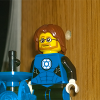
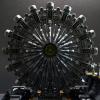



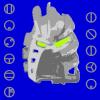
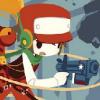
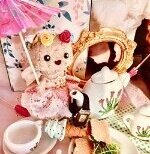
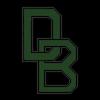
.thumb.png.7060d844d3cc88e4af2a6c1a3d8e333f.png)



